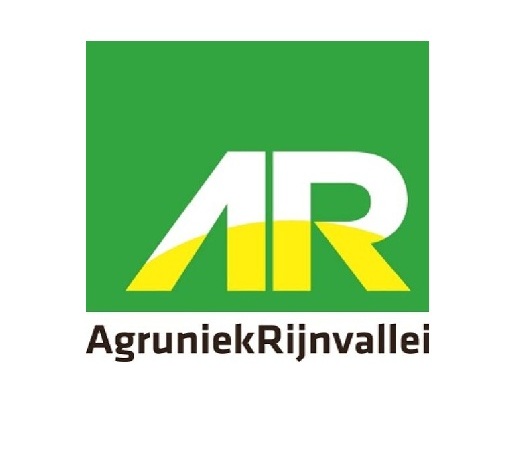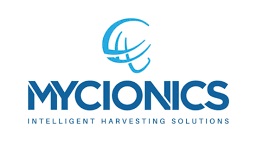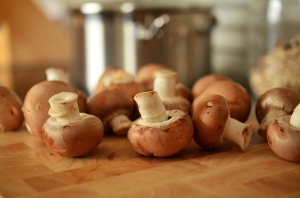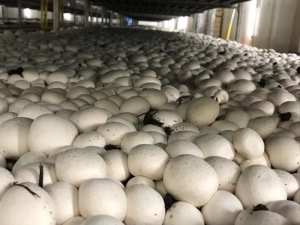The move comes at a time when the horticulture industry looks to accelerate its automation efforts to benefit Canadian growers.
Vineland Research and Innovation Centre (Vineland) has announced the transfer of its patented robotic mushroom harvesting technology to Mycionics, a Canadian agtech company located in Putnam, Ontario.
The move comes at a time when the horticulture industry looks to accelerate its automation efforts to benefit Canadian growers with Vineland uniquely positioned to contribute, given its innovative technology portfolio.
Under the terms of the agreement, Vineland’s intellectual property will be incorporated into Mycionics patent portfolio as they commercialize their mobile robotic harvesting system.
Please read the full article here.
Source: Greenhouse Canada
Researchers in Penn State’s College of Agricultural Sciences have developed a robotic mechanism for mushroom picking and trimming and demonstrated its effectiveness for the automated harvesting of button mushrooms.
In a new study, the prototype, which is designed to be integrated with a machine vision system, showed that it is capable of both picking and trimming mushrooms growing in a shelf system.
The research is consequential, according to lead author Professor Long He, because the mushroom industry has been facing labour shortages and rising labour costs. Mechanical or robotic picking can help alleviate those problems.
Please read the full article here.
Source: E&T Engineering and Technology
Guest Blog: Double & Triple Flush
Double & Triple Flush, Fructification Mushroom technology
My name is Zlatko Vidmar. I have a Master’s Degree in Biology, with specializing in Micology. I have been working the mushroom industry for over forty years, mostly as a consultant. I have worked in Bosnia, Italy, China, Vietnam, Canada, USA, Australia and Algeria. While working in China, I paid special attention to technology after covering with casing material. The method I have been using for over thirty years, I called double and triple flush.
My methodology desires that the casing soil must be sufficiently moist for the first four to five days, after casing. Amount of water varies according to which peat moss is used, black or white, whether sugar beet live or sand is used and how many per cubic meters. What is the percentage mixture of white and black peat moss? The amount of water in those first couple of days is always different and varies from twelve to thirty or more liters.
The grower must make sure that casing soil is on the anaerobic edge after four or five days. The grower must pay attention to the growth of mycelium from the casing soil. I slowly blow air out of my mouth in the direction of the mycelium and if mycelium bends and returns to the starting position, I still wait with fresh air. When the mycelium becomes tired, solid and does not return to its original position, I put fresh air to maximum and increase the air flow.
Note that all the time, after casing, the fresh air is zero and ventilation is about forty percent. When I open fresh air, I add water at the same time; one liter per sq. meter. I lower air temperature and compost as soon as possible to nineteen (air) and twenty-one (compost). The next day, at the same time, I add another liter of water per sq. meter and continue with the flush. Forty-eight hours after the temperature of the compost is about twenty-one and the air temperature about nineteen, grower is able to see small formation of mushroom (pin heads). Many grower call this method of flushing hard flush, only without water.
Now comes what I call double flush.
I completely calm the room by turning off the ventilation and fresh air, actually I simply turn off the electricity. After that, I often tour the room and watch the growth of mushroom carefully. The duration of this part of the flush depends on what the grower wants. Large amount of mushrooms of lower quality (fresh + can) or less mushrooms with high quality (100% fresh).
Also, if the grower wants to stagger more, they can keep longer time without fresh air or ventilation.
I normally leave the room quiet for a minimum of six hours and maximum of ten hours. I think the best results are eight hours at better built farms with better equipment. After six, seven, eight, nine and ten hours, I re-add one liter of water per sq. meter and turn the room back on with full fresh air and ventilation up to ninety percent. The next day, I again repeat the same process of adding another liter of water per sq. meter and continue with the same ventilation and fresh air.
The following day, I set the ventilation to medium, close the fresh air to medium (CO2 around 2000ppm) and wait for the result of the process. If I have too many mushrooms the same size, I do triple flush repeating double flush, meaning I calm the room (no electricity) for eight hours. I, then, add one liter of water per sq. meter, ventilation (fan) 100x and fresh air the same, 100x.
I repeat watering the next day at the same time and the day after, set ventilation at 50x and fresh air at 40-50x (2000ppm CO2).
All the way until harvest, I ensure my mushrooms have all the above conditions for good growth and high quality.
I hope those that are reading this article, will try my technology and if you have any questions, feel free to contact me either via LinkedIn or via email below.
E-mail: This email address is being protected from spambots. You need JavaScript enabled to view it.























